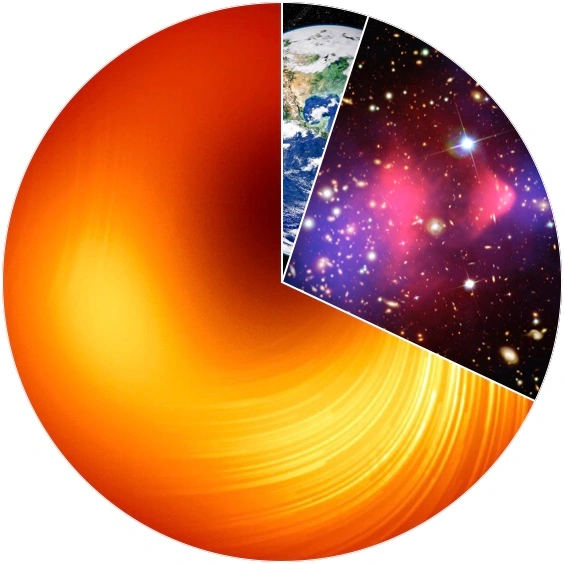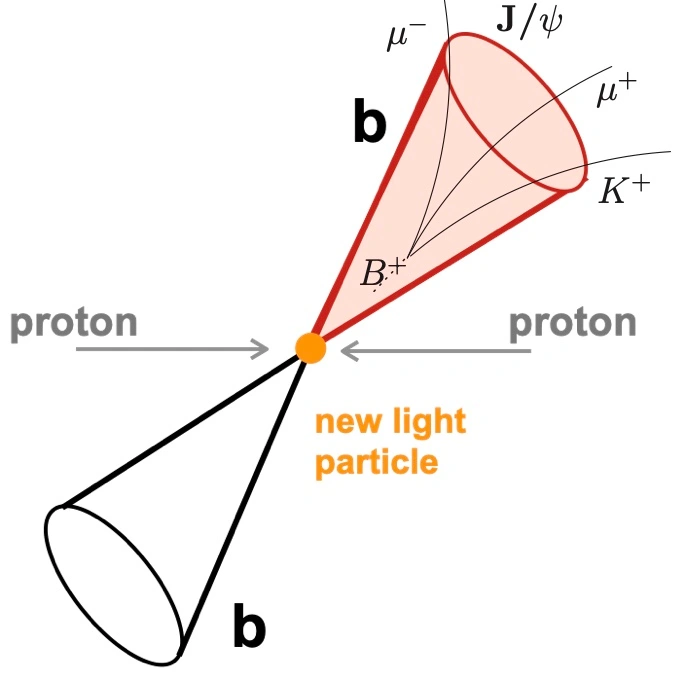Experimental searches @ATLAS
The Large Hadron Collider (LHC) is the world's largest and most powerful particle accelerator. It has been producing collisions of elementary particles at the highest energies since 2010. I analyse the LHC collisions recorded by the ATLAS experiment to text our understanding of the fundamental laws of nature, as well as to extend our knowledge of such laws beyond the current frontiers.
Performing such analyses is a large-scale endeaviour and for this reason the work is organised within the large ATLAS Collaboration. My research work and interests are spread across the following areas.
Searches for Dark Matter and new particles
The nature of Dark Matter (DM) is one of the most intriguiing open questions of our Universe. If Dark Matter has a particle nature it could be produced in the high-energy collesions of the LHC and detected by the ATLAS Experiment. Toghether with my collaborators, I look for signatures of DM particles in the ATLAS data, which could manifest themselves as missing energy in the detector, or as an excess of events in specific regions of the detector. I focus on the particularly interesting possibility that the interactions between DM and the Standard Model particles are mediated by extensions of the Higgs Boson field and therefore investigate events where the heaviest quarks (top quark and bottom quark) are abundantly produced. Together with my group, I search for Dark Matter particles directly and for new particles that can mediate the interactions between known particles and dark matter.
Measurements in extreme high-energy collisions regimes
Our understanding of fundamental interactions is encompassed by the Standard Model of Particle Physics. The LHC provides a continuos test of the Standard Model, and our ability to simulate it, in more and more extreme regimes. Probing and testing phenomenon that are challenging to calculate and simulate is extremely important in improving our understanding of the Standard Model and has the exceptionally beneficial byproduct of improving the precision of the background estimates in the search for hints of physics phenomenon beyond the Standard Model. I am currently involved in a measurement of the quantum interference between single and double resonant top quark production at ATLAS.
Bottom-quark tagging
The identification of jets originating from the hadronization of bottom quarks is of paramount importance within the ATLAS physics program as it provides the tools to discriminate events containing such b-quarks from the extremely high QCD background of an hadron collider. I am involved in various efforts to derive precise calibration of b-tagging algorithms. A recent focus of my group has been the calibration of a new algorithm for the identification of low-momentum bottom quarks. We are currently working towards the calibration of the algorithm with Run-3 data.
Particle phenomenology
I collaborate in studies aiming to develop novel analysis strategies and sensitivity forecasts for collider experiments. I have worked in various phenomenology studies pertaining to Dark Matter within the LPCC-LHC DM Working Group. I have contributed to various sensitivity projection studies for the HL-LHC Run Yellow report. I am very interested in projects at the intersection between particle and astroparticle physics.
In collaboration with my colleague Federico Meloni, I am currently participating to feasibility studies for a Muon Collider, to confirm the realistic performance and feasibility of such a machine, focusing on the design of a detector to operate at 10 TeV centre-of-mass energy.
Medical physics applications
In collaboration with my co-PI, Claudia Seitz, we are developing a novel instrument (KRANOS) for stroke diagnostic and, more in general, neuroimaging based on the detection of Potassum (K) in the brain. The instrument is based on the detection of the naturally present 40K isotope emission and is based on detection and reconstructions techniques from the field of particle and astroparticle physics. Potassium imaging is not currently available in clinical practice (having to rely on expensive research-level magnetic resonance machines) and the succesful implementation of a low-cost, non-invasice imaging device would potentially provide a new messenger for brain functionality and diagnostics. We are currently finalising the design of the instrument and are planning to start the first prototype tests.
I am also collaborating with medical researchers to exchange data-analysis practices between the field of medicine and the field of particle physics, with special attention towards multi-dimensional datasets and imaging.
Fundings on ATLAS Projects
Fundings on Medical Physics Projects
Journal paper highlights
- Calibration of a soft secondary vertex tagger, ATLAS Collaboration, Phys. Rev. D 110 (2024) 032015, arXiv:2405.03253
- Constraints on dark matter models involving an s-channel mediator, ATLAS Collaboration, EPJC (accepted 2024), arXiv:2404.15930
- Search for top-squark pair production in final states containing a t-quark, c-quark and missing transverse momentum, ATLAS Collaboration, JHEP 07 (2024) 250, arXiv:2402.12137
- Search for dark matter produced in association with a single top quark and an energetic W boson, ATLAS Collaboration, Eur. Phys. J. C 83 (2023) 603,arXiv:2211.13138


